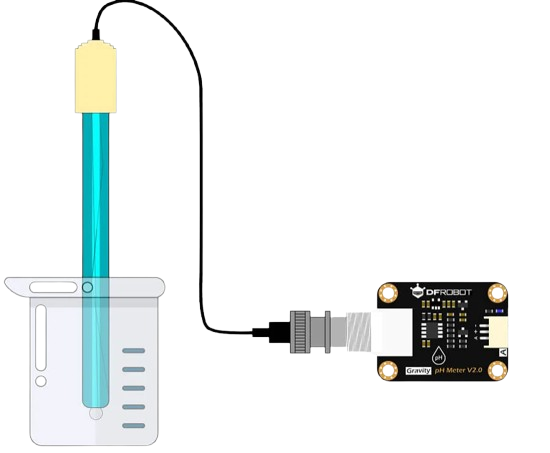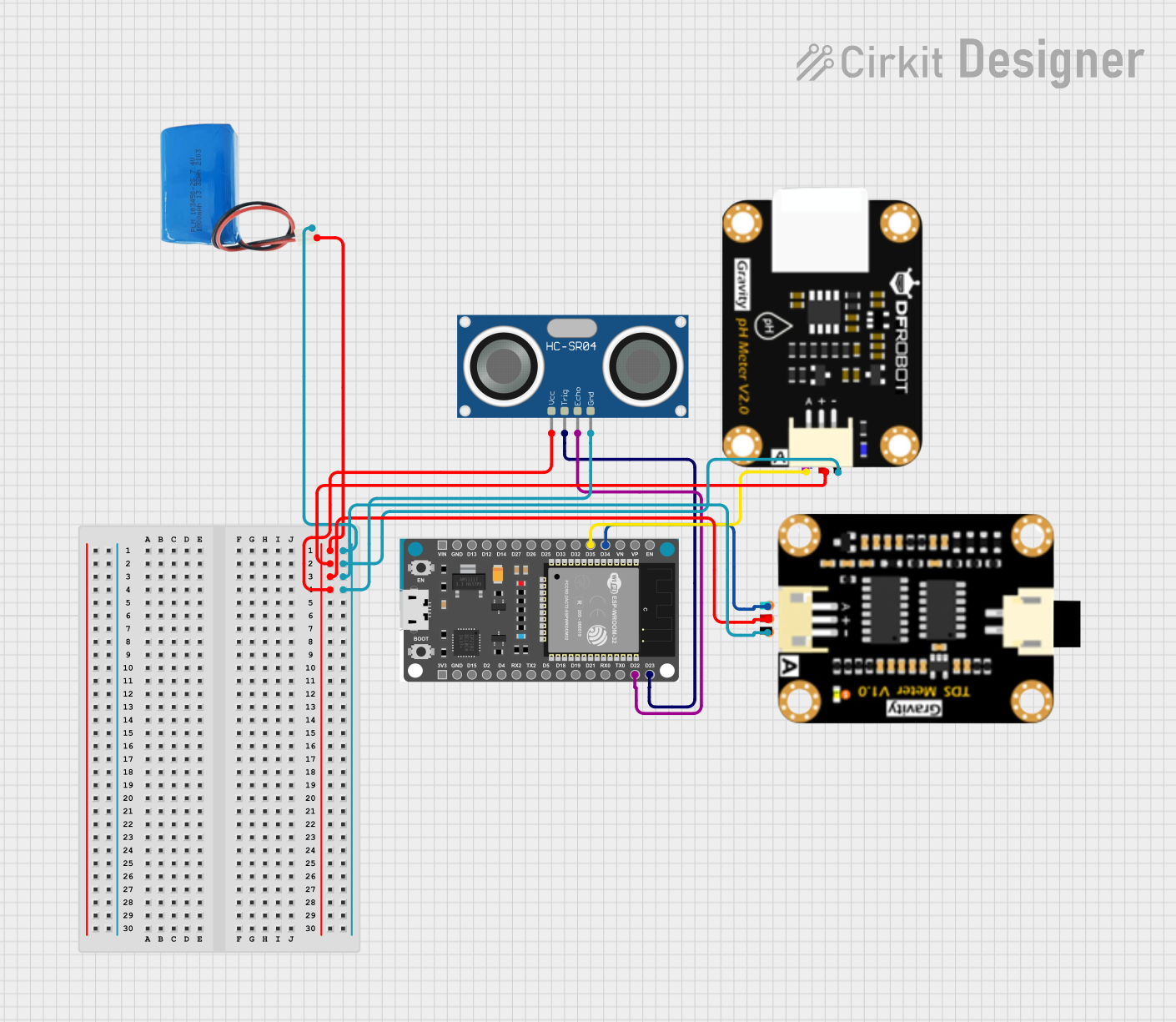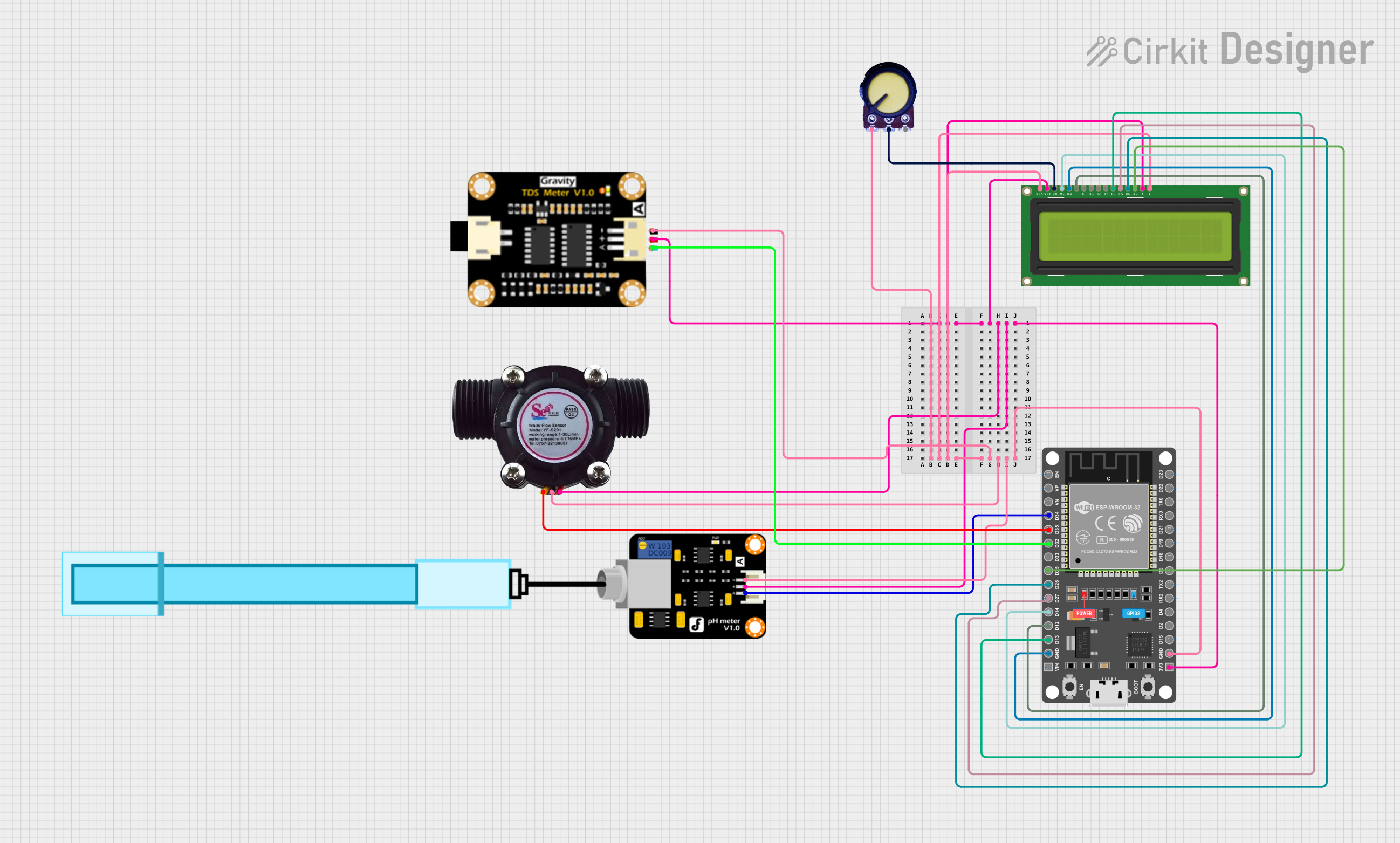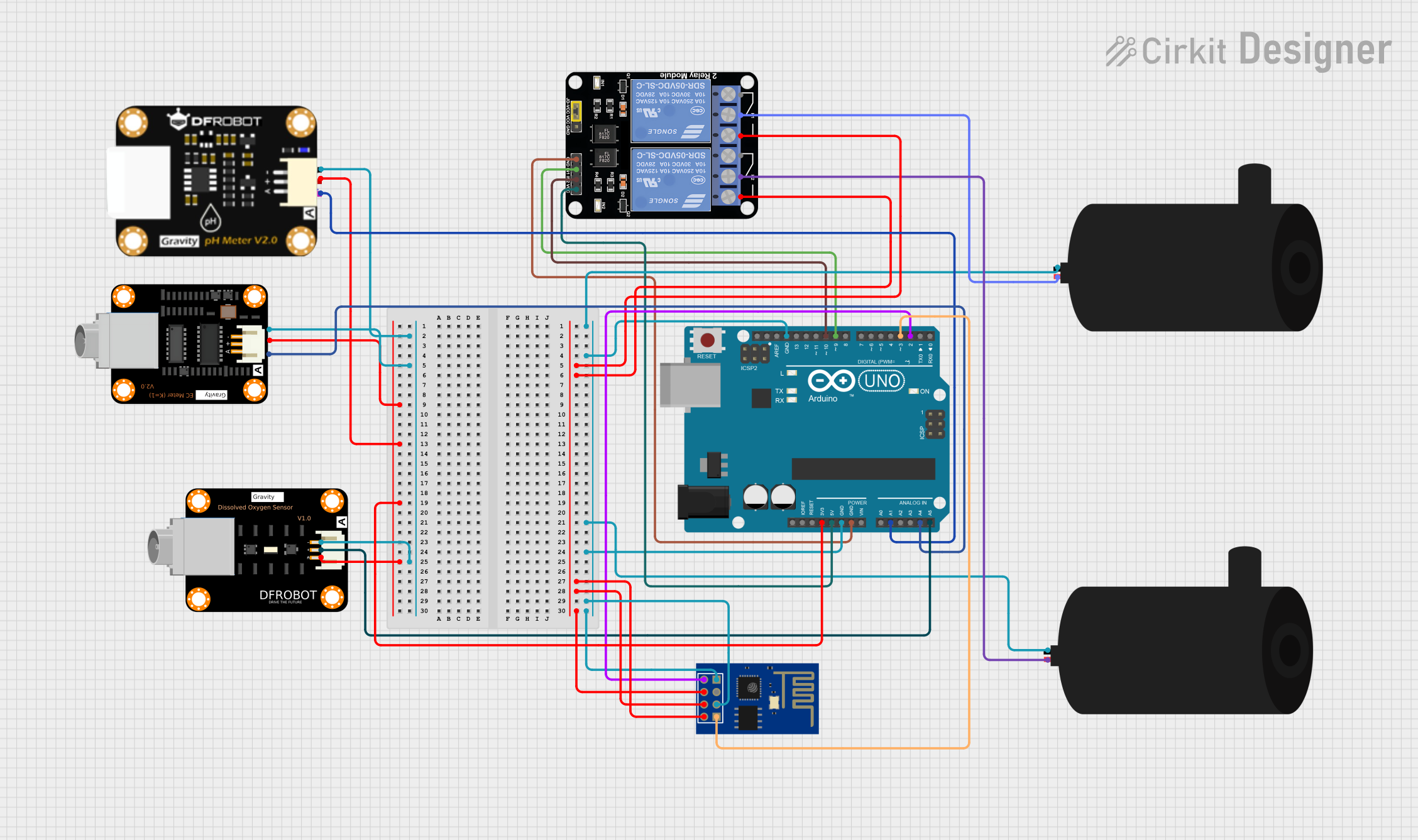
How to Use ph sensor with module: Examples, Pinouts, and Specs

 Design with ph sensor with module in Cirkit Designer
Design with ph sensor with module in Cirkit DesignerIntroduction
A pH sensor with module is an electronic device used to measure the acidity or alkalinity of a solution. It typically consists of two main components:
- pH Probe: A glass electrode that detects the hydrogen ion concentration in a solution.
- Interface Module: Converts the analog signal from the probe into a digital or analog output that can be easily read and processed by microcontrollers or other devices.
Explore Projects Built with ph sensor with module

 Open Project in Cirkit Designer
Open Project in Cirkit Designer
 Open Project in Cirkit Designer
Open Project in Cirkit Designer
 Open Project in Cirkit Designer
Open Project in Cirkit Designer
 Open Project in Cirkit Designer
Open Project in Cirkit DesignerExplore Projects Built with ph sensor with module

 Open Project in Cirkit Designer
Open Project in Cirkit Designer
 Open Project in Cirkit Designer
Open Project in Cirkit Designer
 Open Project in Cirkit Designer
Open Project in Cirkit Designer
 Open Project in Cirkit Designer
Open Project in Cirkit DesignerCommon Applications and Use Cases
- Water quality monitoring in aquariums, pools, and laboratories.
- Agricultural applications, such as soil pH measurement.
- Industrial processes requiring pH control.
- Environmental monitoring of rivers, lakes, and wastewater.
Technical Specifications
Key Technical Details
| Parameter | Value |
|---|---|
| Operating Voltage | 3.3V - 5V |
| Output Signal | Analog (0-3V) |
| pH Measurement Range | 0 - 14 pH |
| Accuracy | ±0.1 pH (at 25°C) |
| Temperature Compensation | No (requires external compensation) |
| Probe Type | Glass electrode |
| Module Dimensions | ~42mm x 32mm |
Pin Configuration and Descriptions
Interface Module Pinout
| Pin Name | Description |
|---|---|
| VCC | Power supply input (3.3V - 5V) |
| GND | Ground connection |
| DO | Digital output (not commonly used) |
| AO | Analog output (voltage proportional to pH value) |
Usage Instructions
How to Use the Component in a Circuit
Connect the Module to a Microcontroller:
- Connect the
VCCpin to the 5V pin of the microcontroller. - Connect the
GNDpin to the ground (GND) of the microcontroller. - Connect the
AOpin to an analog input pin (e.g., A0 on an Arduino UNO).
- Connect the
Calibrate the Sensor:
- Use standard buffer solutions (e.g., pH 4.0, pH 7.0, and pH 10.0) to calibrate the sensor.
- Adjust the potentiometer on the module to fine-tune the output voltage for accurate readings.
Write Code to Read pH Values:
- The analog output voltage corresponds to the pH value. Use the formula provided in the module's datasheet to convert the voltage to a pH reading.
Important Considerations and Best Practices
- Calibration: Regularly calibrate the sensor using standard buffer solutions to maintain accuracy.
- Temperature Compensation: The sensor does not have built-in temperature compensation. For precise measurements, use an external temperature sensor to adjust the pH value based on the solution's temperature.
- Probe Maintenance: Keep the pH probe clean and store it in a pH probe storage solution when not in use. Avoid letting the probe dry out.
- Avoid Damage: Do not immerse the module in the solution; only the probe should be submerged.
Example Code for Arduino UNO
// Example code to read pH values using a pH sensor with module
// Connect the AO pin of the module to the A0 pin of the Arduino UNO
const int pH_pin = A0; // Analog pin connected to the pH sensor module
float voltage; // Variable to store the sensor's output voltage
float pH_value; // Variable to store the calculated pH value
void setup() {
Serial.begin(9600); // Initialize serial communication at 9600 baud
}
void loop() {
voltage = analogRead(pH_pin) * (5.0 / 1023.0);
// Convert the analog reading (0-1023) to voltage (0-5V)
pH_value = 3.5 * voltage;
// Example formula to convert voltage to pH value
// Adjust the multiplier (3.5) based on calibration
Serial.print("Voltage: ");
Serial.print(voltage, 2); // Print voltage with 2 decimal places
Serial.print(" V, pH: ");
Serial.println(pH_value, 2); // Print pH value with 2 decimal places
delay(1000); // Wait for 1 second before the next reading
}
Troubleshooting and FAQs
Common Issues and Solutions
Inaccurate Readings:
- Cause: The sensor is not calibrated.
- Solution: Calibrate the sensor using standard buffer solutions.
Fluctuating Output:
- Cause: Electrical noise or unstable power supply.
- Solution: Use a decoupling capacitor (e.g., 0.1µF) between the
VCCandGNDpins of the module.
No Output or Constant Value:
- Cause: Faulty connections or damaged probe.
- Solution: Check all connections and ensure the probe is functional.
Dry Probe:
- Cause: The pH probe was stored without a storage solution.
- Solution: Soak the probe in a pH 4.0 buffer solution for several hours before use.
FAQs
Q1: Can I use the pH sensor in high-temperature solutions?
A1: Most pH probes are designed for use at room temperature. For high-temperature solutions, use a specialized high-temperature pH probe.
Q2: How often should I calibrate the sensor?
A2: Calibration frequency depends on usage. For critical applications, calibrate before each use. For general use, calibrate weekly.
Q3: Can I submerge the entire module in the solution?
A3: No, only the pH probe should be submerged. The module must remain dry to avoid damage.
Q4: What is the lifespan of the pH probe?
A4: The lifespan of a pH probe is typically 1-2 years, depending on usage and maintenance. Proper care can extend its life.